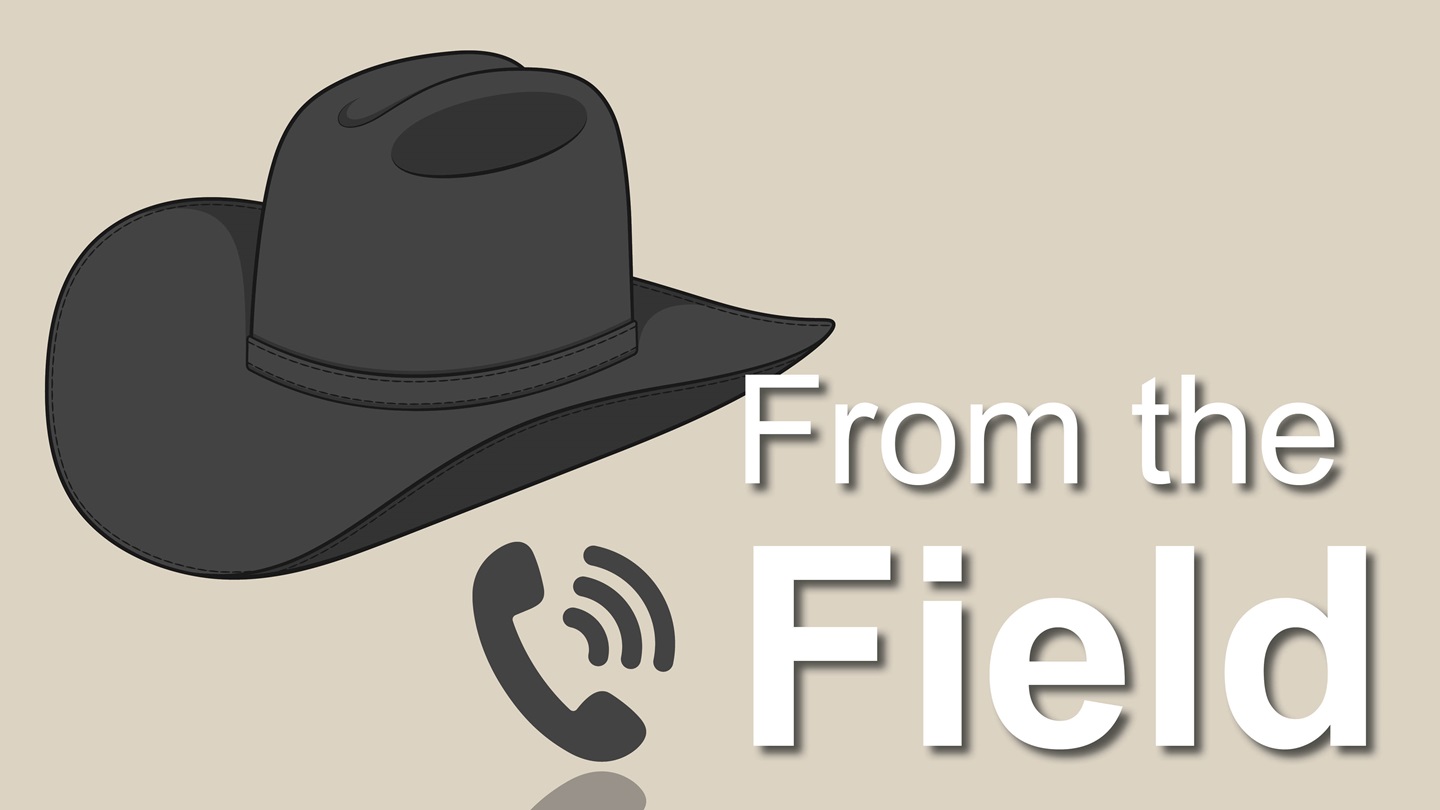From the Field
Notes from your regional managers on calving season preparedness and why planning ahead can save you heartache.
February 19, 2025

It’s that time of year! The season where we welcome new life and hope that we — ranchers, cows and calves included — make it through calving in one piece. In this month’s edition of “From the Field,” we visited with regional managers David Gazda, Jeff Mafi and Landon Andrews to get their input on weather conditions during calving, why preparing materials and facilities ahead of calving season can save major frustration, the importance of developing a solid relationship with your veterinarian when it comes to herd health and critical care, and more.
Mother Nature
For those producers calving in the late fall and early spring, frigid weather conditions can be a major issue. Being prepared with supplies to get some colostrum into a calf’s belly and warm up newborns can be an actual lifesaver during less-than-ideal temperatures, says Jeff Mafi, regional manager for Oklahoma and Kansas.
“Here in Oklahoma most people will calve February to April on open ground. Getting calves dry and out of the wind can be a challenge,” notes Mafi. “But drying calves off doesn’t have to be a big deal. Sometimes it’s as simple as giving them a few minutes in the cab of a warm pickup.”
On the opposite end of the spectrum, calving in warmer climates can offer its own unique issues. Being vigilant and monitoring newborn calves for signs of heat stress can make a big difference in their survival.
“Dropping calves in August and September in this part of the country can be difficult,” explains David Gazda, regional manager for Florida, Georgia and South Carolina. “We can get extremely hot, so that poses a challenge when 2-year-olds decide to calve out in the open and leave their calves in the sun. If calving in the early fall works best for your program, watching cattle closely to make sure calves are being moved into the shade can save a lot of heartache.”
Prepping can save a major headache
Taking inventory of calving supplies and facilities ahead of calving season so that everything is in order when it counts can save a lot of frustration. Especially when a first-calf heifer experiences issues calving or a newborn cannot figure out how to nurse. But planning can also mean moving females a little closer to home to monitor, if your management method allows.
“It always blows my mind when we’re looking through cattle that are close to calving to decide what to bring in,” says Landon Andrews, regional manager for Arizona, California, Nevada and Utah, with a little bit of humor. “You’ll go through and bring 10 home, and then the next day one that didn’t look anywhere close to calving will have a calf on the ground.”
Even the best laid plans can result in challenges, so Andrews also recommends developing a solid relationship with your local large-animal veterinarian. We’ve all heard the adage that the time to create that professional relationship isn’t when a cow experiences calving issues at 2:00 a.m. on a January morning, but a solid working relationship goes even further than that scenario.
“You’re going to have stuff come up that you’ve never seen before. Good communication with your veterinarian allows you to know what concerns are out there ahead of time and gives you time to learn how to treat the problem before it becomes an emergency,” suggests Andrews, noting that having a conversation about something as simple as medications ahead of needing them can make a big difference. “It’s crazy to me the number of medications that you need a prescription to purchase these days. Having mutual respect with your veterinarian to have the conversation about those medications so you have them on hand goes a long way.”
What is ‘normal’?
Normal is a relative term that can mean very different things animal-to-animal during calving season. However, having an idea of what a textbook calving looks like can go a long way to determining what isn’t looking quite right.
“My first recommendation is to give them time. Every cow is different, so the calving timeline isn’t always going to be the same from one cow to another,” Mafi explains, recommending that producers do their research ahead of time to determine what might look normal and what might warrant assistance after observation. “Be savvy and know what that normal presentation should look like. If we’re seeing hooves pointing up or another abnormal presentation, we need to be ready to step in.”
This is a thought echoed across the board during conversations with regional managers. Knowing what a normal presentation looks like is crucial, but having calving supplies on hand to assist in the event things get a little western can relieve a little stress in the moment. Calving chains and handles, a bucket, obstetrical (OB) sleeves and lubricant are some basics to keep around, but the important thing is that everything — including calving pens — are clean.
“Having females — especially heifers — in some kind of lot close to facilities is important,” stresses Gazda. “And those pens need to be clean. Whether they’re grass, covered in straw or something like that. Once we run a cow up in the barn to assist with getting that calf on the ground, that calf needs to stay clean and dry. We don’t want that calf to pick up any kind of illness right out of the gate.”
Editor’s note: “From the Field” is a regular Angus Beef Bulletin EXTRA column featuring advice, industry news and Angus updates from regional managers of the American Angus Association. For information on how to contact your regional manager, click here.
Angus Beef Bulletin EXTRA, Vol. 17, No. 2-B
Topics: Management , Health , Equipment / Facilities
Publication: Angus Beef Bulletin


